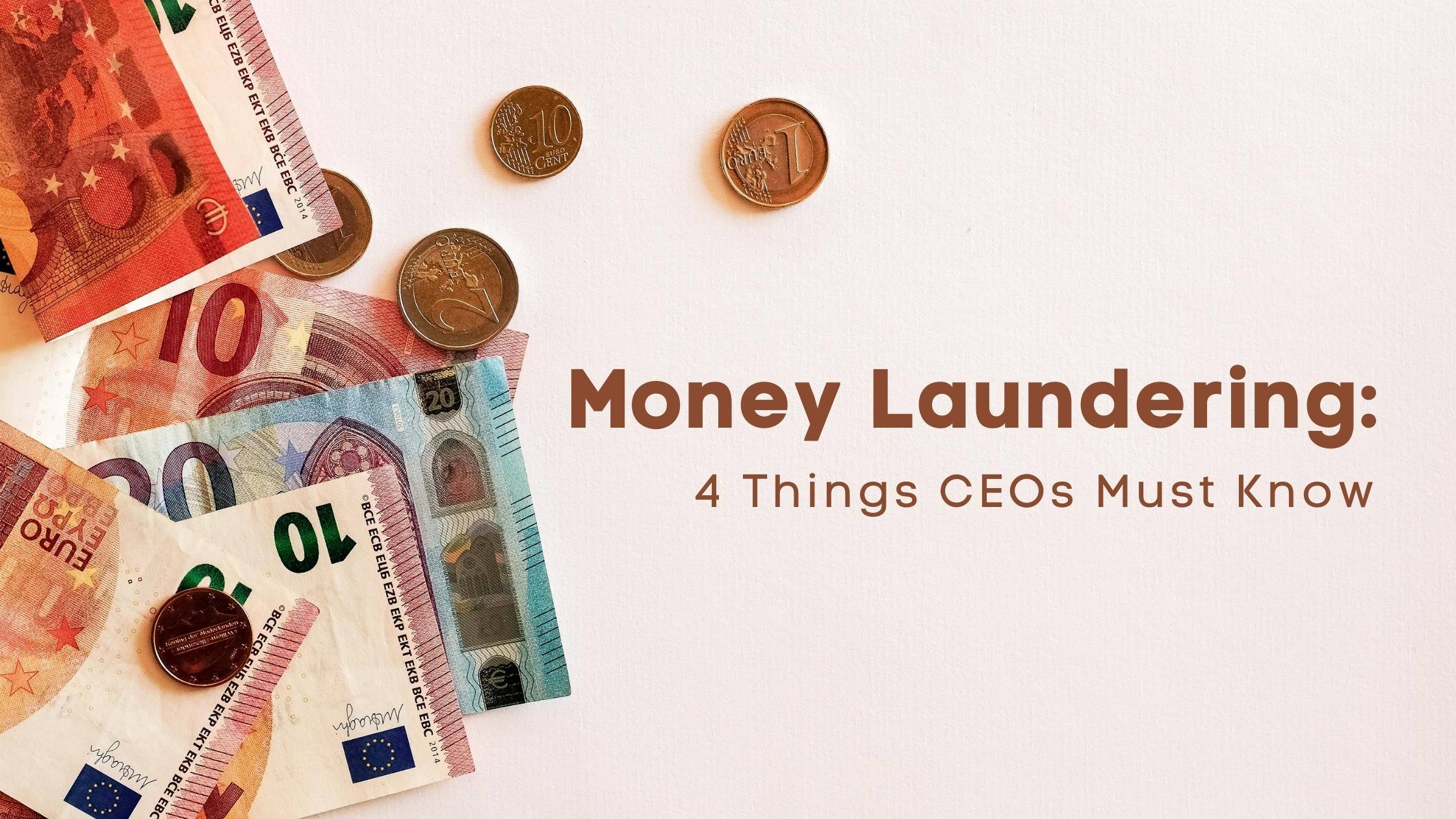Your business is likely at some risk from money laundering if you operate in the financial sector, such as banking, insurance or investment management in particular.
It’s not glamorous, but the issue of money laundering is one of the greatest security concerns in the world today. Not only by criminals, but it’s also increasingly used by businesses, individuals and even governments to hide money.
Not just individuals and businesses are at risk. In recent years, governments have been fined or have had government members arrested because of money laundering. Knowing the basics and employing compliance solutions can help you avoid becoming a victim.
Given the hefty fines that can result from money laundering, you need to understand the basics of money laundering. Here are four things every CEO needs to know about money laundering:
What Is Money Laundering?
Technically, money laundering is the act of disguising the origins of money obtained illegally by putting it into a legitimate-looking process and then withdrawing it from the process into your bank account. It’s often used to describe the process criminals go through to disguise their profits from drug dealing, human trafficking and other crimes so that their money is “clean” and can’t be traced back to them.
But the term is also applied to other forms of illegality, such as tax evasion, embezzlement, securities fraud and corruption. Money laundering is a process that’s used to disguise the origins and ownership of money or assets. The goal is to make the original, illegal money look like it came from a legitimate source, such as a business investment or a bank loan.
How Is It Done?
The easiest way to describe how money laundering is done is to break it down into three stages. There are many different variations, but this is a general overview.
- Stage one: Placement
A prospective launderer (a criminal) will take their illegally obtained money and place it into a legitimate business. It can be as simple as setting up a limited company, LLC or other business structure to accepting a fictitious investment into your business.
- Stage two: Layering
The launderer will then use multiple transactions to send their money through that business account. This can be as simple as taking money out of their account and paying it back into the same account or could involve several different businesses.
- Stage three: Integration
The launderer will then withdraw their money from the business account and put it back into their bank account. This can be as simple as withdrawing it in cash or a wire transfer back into their account, or it can be by asking the legitimate business to pay the launderer’s account.
What Are the Effective Ways of Detecting Money Laundering?
There are numerous ways to detect money laundering. Although there is no one silver bullet technique, when used in conjunction, these methods can be extremely effective.
- Inbound and Outbound monitoring
Have in-house employees check all incoming and outgoing money into the company to ensure it is legitimate. This can be done by checking the sources of funds, the legitimacy of the underlying transaction, the parties involved and any unusual or suspicious activities.
- Monitoring Account Activity
Ensure that all account activity is legitimate and under the company’s policies. Start by checking account balances, all forms of money transfers, account history, account relationships, account ownership and any unusual or suspicious activities.
How Do You Prevent Money Laundering?
To prevent money laundering, you first need to know what indicators to look for, who is most likely to engage in it, and where the risk lies.
The first step is to ask yourself what you are doing to avoid potential money laundering. If you’re not sure, there are certain things you can do to protect your business.
- Make sure your financial system is secure.
- Monitor all transactions for any signs of money laundering.
- Check on the source of funds.
- Train your employees to detect suspicious activities and know what to look for.
- Know who is using your services, what they are using them for, and where the funds are coming from.
- Ensure that you are following due diligence and conducting appropriate checks, including checking the source of the funds and verifying the identity of the person or people behind the transactions.
As a business owner, it might be hard to monitor all the areas of your enterprise that are vulnerable to risks. Adopting corporate compliance solutions can help protect your business from money laundering risks detrimental to your firm’s reputation and credibility.
Final Thoughts
While the board of directors and top management need to ensure that the foundations are in place to prevent money laundering, CEOs should work with their leadership teams to put the right procedures in place.
It is high time that businesses seek professional help to prevent such risks by adopting necessary compliance solutions.

As D&B UAE Company’s Content Marketing Manager since 2012, I direct all phases of both the contextual and technical elements of marketing initiatives.
